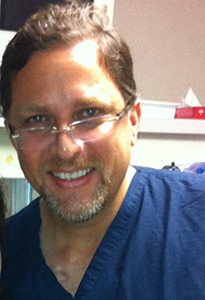Ft. Myers IVF patients had very good questions about PGS.
A very nice patient who is also a nurse was seen in our Bonita Springs office today. She is preparing for IVF in the coming weeks and was seen for her practice embryo transfer and other tests. We were visiting and discussing the plans. She indicated that she was interested in doing PGS “in order to increase her chance of pregnancy.”
PGS stands for pre-implantation genetic screening. It is an added procedure during the IVF treatments. Our clinic performs the embryo biopsies at the blastocyst stage in order to get more accurate results that when a day 3 biopsy is done. The PGS gives the physician and the patient information about the genetic makeup of the embryo. PGS results tell us if the embryo in question is expected to have 23 pairs of chromosomes or if it has an abnormal number of chromosomes like is seen in down’s syndrome where the embryo has an extra chromosome 21.
In the past and in most cases of IVF currently, the embryos are chosen based on their appearance. Unfortunately, embryos can look completely normal and be genetically abnormal. Abnormal embryos (with abnormal number of chromosomes) are the most common cause of implantation failure, IVF failure, and miscarriages.
In addressing this particular patient, I explained to her that “more technology is not always better.” I explained that in her particular case the chance that the PGS information would increase her chance of pregnancy depended on the number of eggs and subsequent embryos that she made. If she were to respond conservatively to the ovarian stimulation and make few eggs, then the PGS would probably not increase her chance of pregnancy over the routine IVF where 2 or three embryos are selected based on their appearance.
If a patient makes fewer eggs, the PGS will just serve to give information and prevent the implantation or transfer of an abnormal embryo that would result in no pregnancy, a miscarriage, or even an abnormal fetus. Fortunately, mother nature is quite good at preventing abnormal embryos from growing. Please refer to the maternal age and reproduction web page at www.drpabon.com or www.geneticsandfertility.com
One other confounding issue is that I believe PGS can help in most cases because it can change clinical treatment and outcomes. This is because when PGS is done at the blastocyst stage, the information is so good that we most often do a single embryo transfer. This virtually eliminates the risk of twins and higher order pregnancies regardless of age. So, the chance of pregnancy per transfer is higher, but some patients don’t have a transfer because all the embryos are abnormal by PGS or so abnormal they don’t develop to the biopsy stage.
This very nice patient should understand that it is ok to use technology when the use of the technology matches her goals and that sometimes the added cost of the additional technology may not increase her overall chance of pregnancy unless there is a good number of embryos to sort through. The big question is: how many embryos is enough? This question has not been answered yet in regards to blastocyst biopsies.
What we should say is that PGS increases the chance of pregnancy per embryo transferred.
All the Best!!
Julio E. Pabon, M.D., F.A.C.O.G.

Medical and Laboratory Director
Fertility Center and Applied Genetics of Florida
Assistant Clinical Professor
Florida State Univ. College of Medicine


